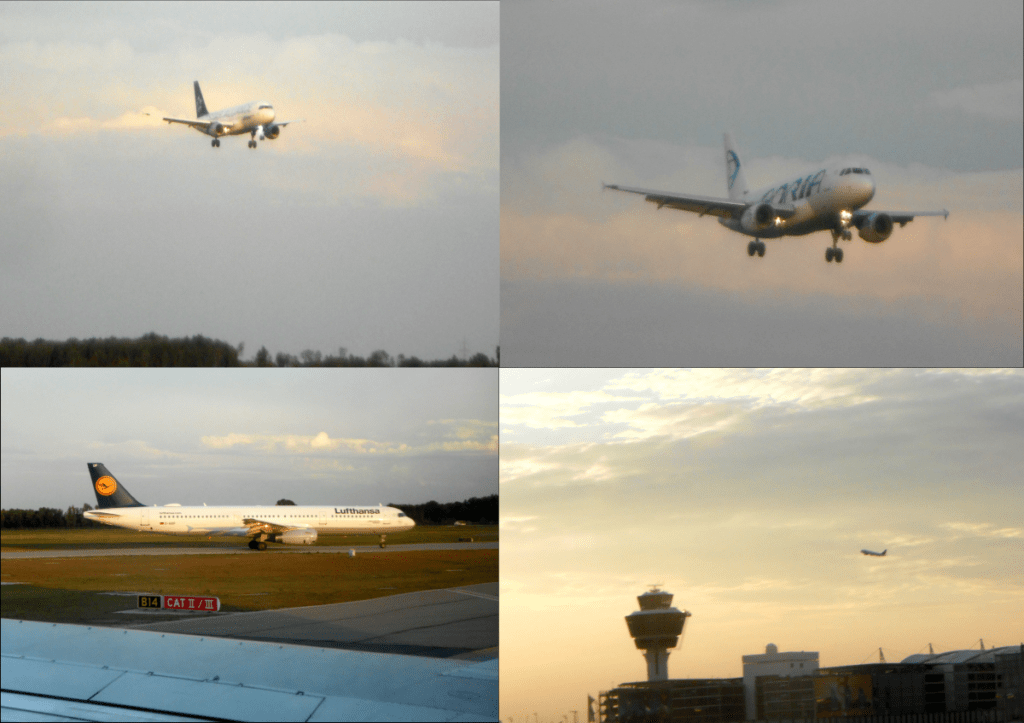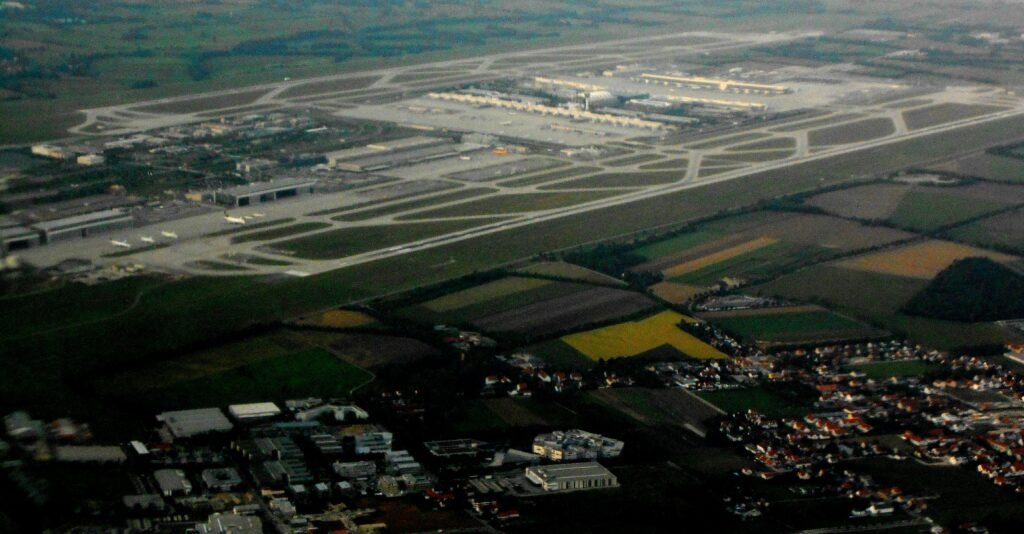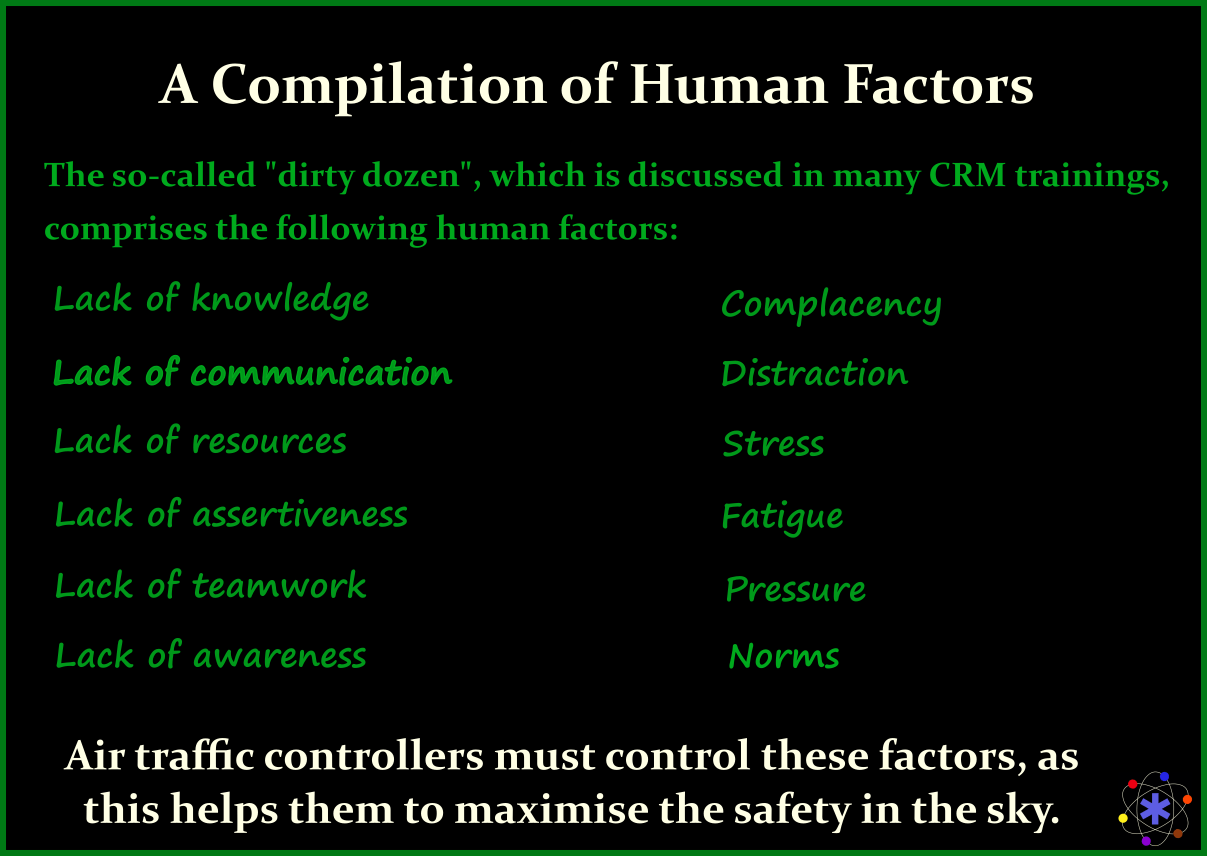About Air Traffic Controllers, CRM and the human factors, TEM, and automation in their profession you can read here:
1. Prerequisites, Education, and Further Training
If you first want to recapitulate what air traffic control is all about, you can read the first article of this series . In this second article, we will start right at the beginning of an air traffic controller´s career.
We will work our way through their education and ongoing training, before we unveil one of the strictest medical surveillance programmes in any line of business. We will also explore what makes this profession so rewarding and why air traffic controllers are proud of it.
Then, we will turn our attention to the daily work of an air traffic controller, paying particular attention to the human factors. Concerning CRM, what role does threat and error management play? Last but not least, automation is making constant inroads into ATC. What will it entail and what do the employees think of that?
1.1. The Prerequisites and Recruitment of Future Air Traffic Controllers
The European Union Aviation Safety Agency, EASA, regulates the certification and licencing of air traffic controllersThe compilation below contains the most relevant criteria that future air traffic controllers have to meet when they apply for a training place at the respective institution in their country.
These are essential skills for which the recruiters look in the recruitment process:
- excellent spatial awareness and the ability to imagine given situations in three dimensions
- phenomenal concentration without being distracted easily
- the ability to handle numbers securely, even under stress
- being extraordinarily well organised
- a fabulous short term memory
- the ability to make even tough decisions rapidly and take responsibility for them
- calmness and resilience
- great listening and communication skills
- being able to work within a team
Additional criteria in the recruitment process:
- in Germany, the "Abitur", the equivalent to the A-levels in the UK, is required
- superb knowledge of English
- the candidates must be very healthy and fulfil the medical requirements
1.2. Initial Training and Further Education
First, the to-be air traffic controllers undergo theoretical and simulator training, which lasts from twelve to eighteen months. After that and an exam, the trainees work directly in ATC centres, where they are closely supervised, for about one more year before they are fully qualified.
Throughout their careers, air traffic controllers will attend ongoing training courses, which also include simulator sessions.
2. The Medical Surveillance of an Air Traffic Controller Is Strict
The extremely strict and regularly performed medical examinations start even before those who want to enter this career are granted permission to start their training. Some preexisting conditions, such as diabetes or epilepsy make it impossible to become an air traffic controller. The medical surveillance continues throughout the career.
Also psychological testing is included in the schedules. In case of a mental disorder, such as a clinically apparent depression, a personality disorder, or the abuse of alcohol and any type of drugs, no medical certificate will be issued.
2.1. What Types of Examinations Are Performed?
Whenever an aspiring or fully educated air traffic controller is examined, it all starts with a detailed questionnaire and a conversation. Then, the clinical examination is performed, followed by a laboratory and instrumental examinations. The details of the mandatory tests can be found in the EASA document linked in subchapter 1, starting on page 88.
This list provides an overview of the most important examinations:
- the ears and the auditory sense, as well as the eyes and the vision are thoroughly tested
- in the clinical examination, all major organ systems are evaluated, including the musculoskeletal system
- the past medical history is carefully reviewed, as are all drugs which an air traffic controller may be taking
- an ECG is performed in order to detect any cardiac dysrhythmias and other disorders
- blood tests are executed
2.2. Air Traffic Controllers Must Stay Away From Certain Medications
Air traffic controllers must tell the doctors about every single medication they take. This comprises even drugs which are sold over the counter. Some medications are prohibited altogether. Whenever air traffic controllers are considering taking a certain drug, they are advised to ask themselves these three questions (page 133 in the document linked in subchapter 1):
Do I feel fit to control?
Do I really need to take medication at all?
Have I given this particular medication a personal trial whilst not exercising the privileges of my licence to ensure that it will not have any adverse effects on my ability to exercise the privileges of my licence?
3. Why Are Air Traffic Controllers Satisfied With Their Careers?
When air traffic controllers are asked whether they appreciate their work, most of them answer that they thrive at their workplaces and that they are more than satisfied with their professional lives. They know where the challenges in their tasks lie and are proud of their superb skills.
This list contains important factors which contribute to their satisfaction:
- air traffic controllers have the freedom to make decisions on their own
- they carry an incredible amount of responsibility when separating the planes correctly at all times
- they know that their highly responsible job is extremely relevant
- no two days are alike, as unforeseen incidents and delays may happen at any time
- they enjoy their work in a team of true professionals
- the communicating with the pilots of all types of aircraft, coming from all over the world, is exciting
- the day at work is demanding, but there is no work which has to be taken home afterwards
- there are perks such as extra breaks during the workday and extra days off due to shift work and the constant mental challenges
- air traffic controllers earn a good salary which reflects the degree of difficulty and the responsibility

4. Air Traffic Controllers Face the Human Factors and Use CRM
4.1. Workload Management, Teamwork, Planning Ahead, and More
What Makes the Profession so Challenging?
Air traffic controllers must pay attention every single second when they are working. In stressful situations, they have to keep a clear head, as they still have to process all relevant information. In case of an unforeseen incident, air traffic controllers have to handle it swiftly and confidently.
Such an incident can be a runway incursion, which means that a vehicle or aeroplane has taxied onto an active runway without permission. Now, a devastating collision might follow, especially at busy airports. Hence, the intruder and the pilots, who are about to take off or land, must be guided immediately.
The communication, which is mostly in English, has to be clear and precise at all times, even when English is a second language. In addition, it might be difficult to understand some pilots´ English, as many of them are not native speakers.
Workload Management and Planning Ahead
Let´s imagine an air traffic controller, who is responsible for the handling of two of the four runways at a large airport. She takes over planes from air traffic controllers who guide all traffic on the apron (planes that will take off) and from the approach control service (airliners that are about to land). Hence, planes come from both services and have to be handed over to both services.
The air traffic controller knows the flight plans, but might also have to handle extra planes, for example, in case of an emergency landing. She has to manage her workload in such a way that she always knows what planes are under her control at what point in time, without losing any of them out of her sight for a moment.
Furthermore, she must use her excellent short term memory to remember where the planes are located and what instructions she has given to each cockpit crew. When there is a little less traffic for a moment, she can think ahead and prepare for the planes which will be in contact with her next.
Teamwork and Working at Interfaces
Within the various parts of ATC, there is teamwork and in some cases also guidance by a supervisor. As we have seen before, different control services hand over planes to one another. Thus, they are working at an interface. At such interfaces, it is of vital importance that no information is lost or misunderstood.

4.2. Where Do the Human Factors Come Into Play? How Are They Counteracted?
In the illustration below, you can see the members of the so-called "dirty dozen", a commonly used summary of human factors. These hamper our work and make us prone to errors. We will look at examples in which these human factors become evident in air traffic control and what ATC personnel can do about them, using CRM.

Lack of Knowledge
New systems are constantly introduced in ATC. In order to let the air traffic controllers learn about them, upper management should reserve the necessary time for the respective training courses.
Lack of Communication
When air traffic controllers deliver a message containing several instructions, a piece of information can easily be left out. Closed communication loops give the sender of the message one more chance to detect the error and add the missing piece. However, one hundred percent perfection can never be guaranteed.
Lack of Resources
A tower can be understaffed. The person in charge should point this out to upper management in order to improve the situation. An ongoing lack of resources can contribute to fatal errors as we will uncover in April´s article.
Lack of Assertiveness
An air traffic controller has to demonstrate assertiveness when instructing pilots. This is ensured by the recruitment of the right candidates and thorough training. Later, maintaining the skills and using CRM concepts contribute to an air traffic controller´s confidence. This, in turn, is a good foundation for the assertiveness, as long as it doesn´t give way to complacency.
Lack of Teamwork
This might occur when a supervisor does not support a younger air traffic controller enough. Attending training in a simulator regularly, with a particular focus on how the team members interact with one another, is crucial.
Lack of Awareness
Especially when the workload is extremely high, it can happen that an air traffic controller loses track of an airliner. As we have seen in the beginning, an extraordinary concentration and short term memory are critical. CRM training helps to keep all kinds of situational awareness in mind (spatial awareness, awareness of time and all information, technical awareness, etc.).
Complacency
Highly professional air traffic controllers might rarely become complacent when working. However, complacency pertains to knowledge and skills, as well. These have to be refreshed and updated regularly.
Distraction
An air traffic controller faces many distractions on the job. These can include additional traffic, but also malfunctioning systems, adverse weather conditions, or blinding lights along the runways at night.
Therefore, the ability to focus on what is most important despite of the distractions is invaluable. Growing experience also helps to stay concentrated without wasting time and attention on the distraction, as long as it is not relevant and requires some sort of action.
Stress
As the profession of an air traffic controller is stressful, breaks are mandatory after two hours of work by the latest. The stress level can vary, depending on the density of air traffic and many other factors. Whereas eustress helps to focus, hyperstress (too much to do) is dangerous and impairs safety.
Fatigue
If stress prevails for too long a period of time, perhaps accompanied by additional factors such as an ongoing lack of personnel, an air traffic controller might experience fatigue. This is much more serious than stress and can lead to a prolonged sick leave. In order to prevent fatigue, air traffic controllers have more days off between shifts. Any contributing factors should be addressed in the best possible manner.
Pressure
The demanding profession itsself already exerts the pressure to perform as perfectly as possible. Air traffic controllers need considerable resilience and resources to withstand the pressure. In addition, preparation and constant training, superb knowlegde and skills, but also a professional attitude are of great help.
Norms
Norms are like unwritten laws within a certain group. They might be beneficial, but can also include less favourable habits, which a group has adopted over time. As we will see in the next article, these can even encompass prolonged breaks during a shift, leaving the work to others.
5. Threat and Error Management in Air Traffic Control
Threats, Errors, and Interrelations
Whereas threats can come from the outside and are not necessarily caused by an error, errors are made by the team. The errors can develop into threats. Threats add complexity to the ongoing operation and reduce the safety margins. You can read about threats, errors, the interrelations and consequences, but also how threats and errors are managed in this article .
Predictable and Unpredictable Threats
Also in ATC, there are predictable and unpredictable threats. The former comprise weather conditions and dense air traffic that is expected according to the schedules. The latter include errors made by vehicle drivers on the ground, or aircraft malfunctions.
Errors and Undesired States
Errors cause deviations from the intended course of action, or from expectations. They lead to an undesired state, which has to be detected and requires time, attention, and resources to be corrected.
Anticipate, Recognise, Recover
Threat and error management teaches everyone who works in a high-risk work environment to anticipate the potential threats and errors, to recognise them when they occur, and then to recover the safety margins. It is crucial to recover first and analyse the causes later.
6. The Discussion About Automation
6.1. Automated Systems in Use Today
Information and Augmented Safety
Many automated systems are already established at the air traffic controllers´ workplaces. They provide vital information, such as weather conditions. In addition, some systems enhance safety. For example, so-called runway status lights are used at some US airports.
They are located at all intersections of a runway and turn from yellow to red whenever a vehicle or plane may not enter. This fully automatic system is triggered by planes which are about to take off from the respective runway, or land on it.
Air Traffic Controllers Still Make All Decisions
It is important to note that today´s automated systems do not make any decisions. Air traffic controllers are generally proud of their extraordinary skills and enjoy their independce and the opportunities to make far-reaching decisions rapidly. They do not fancy the idea to have them taken out of their hands.
6.2. Extended Automation May Have Detrimental Consequences
It has been demonstrated earlier that humans are not good at monitoring automated systems. The respective abilities will not improve if an air traffic controller is responsible for the safety of hundreds of passengers. Furthermore, a decay of knowledge and skills is feared. If an automatic system fails all of a sudden, humans have to step in immediately. If they are not trained any more, a major collision can happen almost instantaneously.
Last but not least, it will certainly have a negative impact on the achivements if automation deprives the air traffic controllers of their pride and satisfaction, which they gain from doing an excellent job. Their experience and their gut feeling, which they can use in an unusual situation, cannot be replaced.
7. The Überlingen Mid-Air Collision Will Be Our Topic in March
When we look at this tragic air accident, we can detect many links of a chain of events that contributed. We will pay particular attention to the circumstances in which the air traffic controller concerned had to work that night. In doing so, we will find several human factors which, intertwined with the horrible chain of events, ultimately resulted in a fatal human error.
Author: Eva-Maria Schottdorf
Date: February 11th, 2024
On my blog page , I have linked more blog articles for you.
After one year, the articles will be removed from the blog page, updated, augmented and turned into books. You can purchase these directly on the page "A Special CRM Book Series" . The first volume is already waiting there for you.
